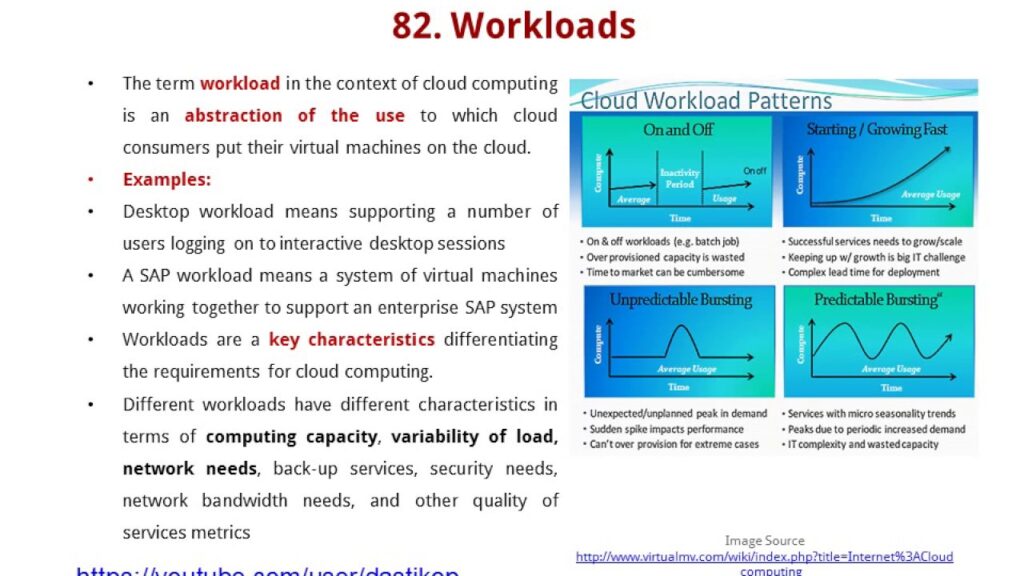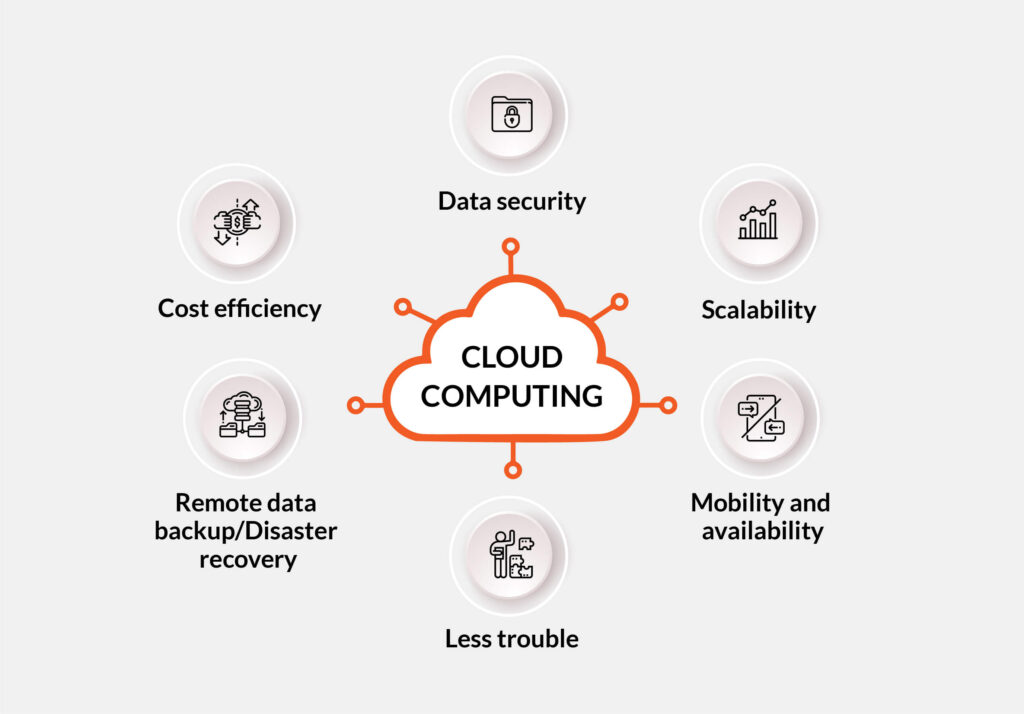Businesses heavily rely on technology to ensure smooth operations, and any disruptions can result in significant financial and reputational losses. Cloud migration as a service (CMaaS) has emerged as a crucial strategy to protect businesses from such risks. This article delves into why CMaaS is more than just a passing trend and highlights how cloud migration services and solutions are integral for ensuring uninterrupted operations for businesses of all sizes.
Understanding the Importance of Business Continuity
Business continuity refers to an organization’s ability to sustain essential operations during and after disruptions. Whether the challenges come from natural disasters, cyberattacks, or market fluctuations, the primary goal is to minimize downtime and maintain uninterrupted service delivery.
The Significance of IT in Business Continuity
Information technology and cloud computing have become the backbone of modern business. IT systems play a crucial role in day-to-day operations, from managing customers to handling supply chains. When these systems fail, the repercussions can be severe. Even a few hours of downtime can result in substantial revenue loss, harm to brand reputation, and diminished customer trust.
Challenges Faced Without Cloud Solutions
Businesses operating on traditional on-premise IT infrastructure encounter various vulnerabilities:
- Hardware failures: Aging servers and hardware malfunctions can lead to unexpected downtime.
- Physical security risks: Natural disasters like floods or fires can damage physical servers, resulting in data loss.
- Limited scalability: Traditional infrastructure often lacks the flexibility to scale during peak demand or crises.
Understanding Cloud Migration as a Service: Cloud Migration as a Service (CMaaS) refers to managed services that facilitate the transition of a company’s systems, applications, and data to cloud-based platforms. Unlike do-it-yourself approaches, CMaaS provides expertise and assistance throughout the migration process, ensuring a seamless shift with minimal disruption.
Key Components of CMaaS
- Comprehensive support: From initial assessments to post-migration optimization.
- Scalability: Tailored solutions for businesses of all sizes, from startups to enterprises.
- Hybrid and multi-cloud environments: Flexibility to integrate on-premises systems with cloud platforms or utilize multiple cloud providers.
Different Types of Cloud Migration
- Rehosting (lift-and-shift): Transferring applications to the cloud without significant modifications.
- Refactoring: Adapting applications to leverage cloud-native features fully.
- Rebuilding: Completely redesigning applications for the cloud environment.
The Importance of Managed Services
Navigating cloud migration can be intricate. Managed services simplify this process by offering specialized expertise, quicker deployment, and reduced risks of operational disruptions.
Why CMaaS is Crucial for Business Continuity
1. Mitigating Downtime Risks
Downtime poses a significant threat to business continuity. A single hour of downtime can result in substantial financial losses for enterprises. CMaaS ensures a seamless transition to the cloud, minimizing disruptions. Managed migration reduces the chances of service interruptions, enabling businesses to uphold customer trust and operational efficiency.
2. Data Security and Disaster Recovery
The cloud offers robust disaster recovery solutions, ensuring data backups and accessibility during emergencies. CMaaS providers implement comprehensive disaster recovery plans, which are often more reliable and cost-effective than traditional systems. For instance, businesses utilizing cloud-based disaster recovery solutions were able to recover from ransomware attacks faster than those relying on physical backups. Cloud service providers play a crucial role in ensuring data security and disaster recovery through their robust infrastructure and advanced security measures.
3. Scalability and Flexibility
Unforeseen events like market surges or operational crises often necessitate rapid infrastructure scaling. Traditional systems struggle to adapt to such demands. Cloud solutions, on the other hand, offer unparalleled scalability. CMaaS enables businesses to scale up or down as needed, ensuring continuity without excessive investment in physical infrastructure. The multiple data centers utilized by cloud providers ensure redundancy and reliability, crucial for maintaining business continuity during disruptions.
4. Supporting Remote Work
The increasing prevalence of remote and hybrid workforces has made cloud adoption imperative. CMaaS ensures that employees can securely access essential systems and data from any location, supporting uninterrupted operations irrespective of physical barriers. This flexibility has become a cornerstone of modern business continuity strategies.
5. Cost-Effectiveness and Resource Optimization
On-premises infrastructure entails high costs for hardware, maintenance, and upgrades. Cloud migration helps reduce these expenses, allowing businesses to allocate resources more efficiently. With CMaaS, companies only pay for the resources they utilize, making it a cost-effective solution. By leveraging cloud-based solutions, businesses can optimize costs while maintaining business continuity.
6. Compliance and Regulatory Requirements
Regulatory compliance is a significant concern for businesses, particularly those handling sensitive data. CMaaS providers ensure adherence to data governance standards such as GDPR and HIPAA. They offer tools to manage compliance across different regions, reducing the risk of fines and legal complications. Service level agreements (SLAs) provided by cloud providers guarantee compliance and data integrity.
7. Utilizing AI and Automation
Cloud platforms provide access to AI-driven insights and automation tools. These features optimize processes, enhance decision-making, and improve operational efficiency. By migrating to the cloud, businesses can leverage predictive analytics and automation to stay ahead in competitive markets.
Real-World Examples of CMaaS Ensuring Business Continuity
Case Study 1: Retail Sector
A retail company faced supply chain disruptions during a natural disaster. By employing CMaaS, they migrated their inventory management system to the cloud. This ensured real-time updates and coordination with suppliers, enabling them to sustain operations despite the disruption.
Case Study 2: Financial Services
A financial institution encountered a cybersecurity breach. Fortunately, their critical systems had been migrated to the cloud using CMaaS. The cloud’s robust security measures and rapid disaster recovery capabilities allowed the bank to restore services within hours, minimizing the impact on customers. Automated backups provided by the cloud ensured that no critical data was lost.
Case Study 3: Healthcare Industry
A hospital system targeted by a ransomware attack averted catastrophic data loss thanks to its cloud-based disaster recovery plan. The migration, facilitated by CMaaS, ensured that patient records and essential applications were backed up and swiftly restored. The utilization of cloud storage solutions helped the hospital maintain compliance with data security regulations.
The CMaaS Cloud Migration Process
1. Assessment Phase
- Identify business objectives and IT requirements.
- Conduct an audit of current infrastructure to determine the optimal migration strategy.
2. Migration Planning
- Develop a customized roadmap for migration.
- Prioritize systems and applications based on their business impact.
3. Execution
- Migrate data, applications, and systems with minimal downtime.
- Utilize automated tools to ensure accuracy and efficiency. The cloud migration process is designed to simplify complexity and enhance efficiency.
4. Post-Migration Optimization
- Fine-tune cloud infrastructure for performance and security.
- Monitor systems to identify and address potential issues.
5. Ongoing Support
- Regular updates and maintenance.
- Proactive monitoring to prevent disruptions.
Addressing Common Challenges in Cloud Migration
Challenge 1: Resistance to Change
Employees may resist new systems due to a lack of understanding. Solution: Provide training programs and communicate the benefits of migration.
Challenge 2: Budget Constraints
Migrating costs can be a concern. Solution: Adopt a phased migration approach, starting with critical systems.
Challenge 3: Data Privacy Concerns
Businesses are apprehensive about data security in the cloud. Solution: Partner with compliant CMaaS providers who prioritize security and regulatory compliance. The enhanced security measures offered by cloud providers safeguard sensitive data.
Challenge 4: Legacy System Integration
Older systems may not be compatible with the cloud. Solution: Employ hybrid migration strategies to gradually modernize infrastructure.
Future Trends in Cloud Migration and Business Continuity
1. Emergence of Multi-Cloud Strategies
Businesses are increasingly embracing multi-cloud environments to reduce dependence on a single provider and enhance resilience.
2. Adoption of Edge Computing and IoT Integration
Edge computing facilitates real-time data processing at the source, enabling quicker responses during disruptions. Integrating cloud with IoT further enhances operational efficiency.
3. Focus on Green Cloud Solutions
Sustainability is becoming a priority. Cloud providers are investing in energy-efficient data centers, aligning business continuity with environmental objectives.
4. Utilization of AI-Driven Migration Tools
AI tools streamline cloud migration, providing predictive models and automation to ensure smoother transitions and optimize post-migration performance.
In Conclusion
A robust cloud migration strategy is no longer a choice – it is imperative for businesses looking to maintain continuity in an unpredictable world. By mitigating downtime, enhancing security, and offering scalability, CMaaS empowers organizations to weather disruptions and thrive in competitive markets. The integration of cloud-based business continuity measures ensures resilience and operational excellence.
(Image source: Unsplash)



